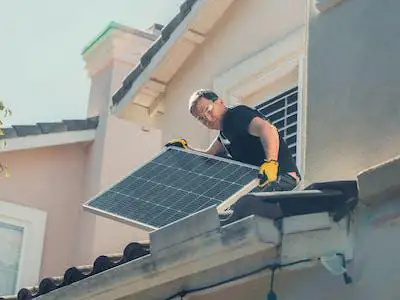The answer, like sunlight filtering through leaves, is nuanced. While the technology has become remarkably versatile, certain factors determine a building's solar suitability. Let's embark on a journey, exploring the rooftops and delving into the technicalities that make or break a solar dream.
Rooftop Realities: Size, Shape, and Structural Strength
Imagine a majestic cathedral bathed in sunlight. Its vast, sloping roof beckons for solar panels, promising a bounty of clean energy. But hold on! Roof size plays a crucial role. While expansive roofs offer ample space for panel placement, smaller ones might struggle to accommodate enough panels for significant energy generation.
Roof shape also throws its weight around. Ideally, south-facing roofs with a 20-40 degree pitch bask in the sun's prime real estate. However, don't despair if your roof faces east or west, or boasts a gentler incline. Clever tilts and strategically placed panels can still capture a respectable amount of sunlight.
But the most fundamental concern lies in the structural integrity of the roof. Think of it as the foundation of your solar dreams. Can it handle the weight of the panels, racking systems, and potential snow or wind loads? A thorough roof inspection by a qualified professional is paramount before taking the plunge.
Material Matters: A Canvas for the Sun's Embrace
Roofs, like personalities, come in diverse materials, each with its own solar story. The most common canvas, asphalt shingles, readily welcomes panels with minimal fuss. Metal roofs, with their inherent strength, provide a sturdy platform, while concrete and slate roofs, though less frequent, can also host solar arrays with proper installation techniques.
However, some materials pose unique challenges. Clay tiles, for instance, might require specialized mounting systems to avoid compromising their delicate beauty. Flat roofs, while offering ample space, often necessitate tilted structures to optimize sun capture, adding to the installation cost.
Sun Seekers: Location, Location, Location!
Just like sunflowers crave direct sunlight, so do solar panels. Location plays a starring role in determining their effectiveness. Regions with abundant sunshine hours obviously hold the upper hand. But even in less sunny locales, panels can still generate useful energy, albeit with slightly lower outputs.
Furthermore, consider obstructions like nearby trees or buildings that might cast unwelcome shadows on your panels throughout the day. A detailed solar analysis by a professional can map your sun exposure and predict energy production with remarkable accuracy.
Financial Feasibility: Weighing the Costs and Rewards
Solar panels, though increasingly affordable, represent a significant investment. The initial cost depends on factors like system size, roof material, and installation complexity. However, several financial incentives can significantly ease the burden, including government rebates, tax credits, and net metering programs that allow you to sell excess energy back to the grid.
Remember, solar is not just about immediate savings; it's an investment in the future. Reduced electricity bills over the system's lifespan (typically 25-30 years) can outweigh the initial cost, and the increased property value of a solar-powered home adds another layer of sweetness.
Beyond the Roof: Exploring Alternative Solar Options
Not every building boasts a suitable rooftop. But fear not, solar enthusiasts! Technological advancements have opened doors to alternative sun-catching solutions. Ground-mounted systems can be strategically placed on your property, while solar carports offer dual functionality, sheltering your vehicles while generating clean energy.
For buildings with flat or inaccessible roofs, solar awnings and balcony-mounted systems can be viable options. Additionally, advancements in thin-film technology allow for the integration of solar panels into building materials themselves, paving the way for a future where walls and windows become mini-powerhouses.
The Final Verdict: A Mosaic of Sun-Kissed Possibilities
So, can any building bask in the glory of a solar roof? The answer, like a sun-dappled forest floor, is a mosaic of possibilities. While limitations exist, technological advancements and creative solutions are constantly expanding the reach of solar energy. Remember, a qualified solar installer can assess your specific situation and tailor a system that harnesses the sun's potential, transforming your building into a beacon of clean energy generation.
Embrace the sun's power, explore the options, and remember, even a small step towards solar can make a giant leap for a brighter, more sustainable future. So, go forth, assess your rooftop, and let the sun

